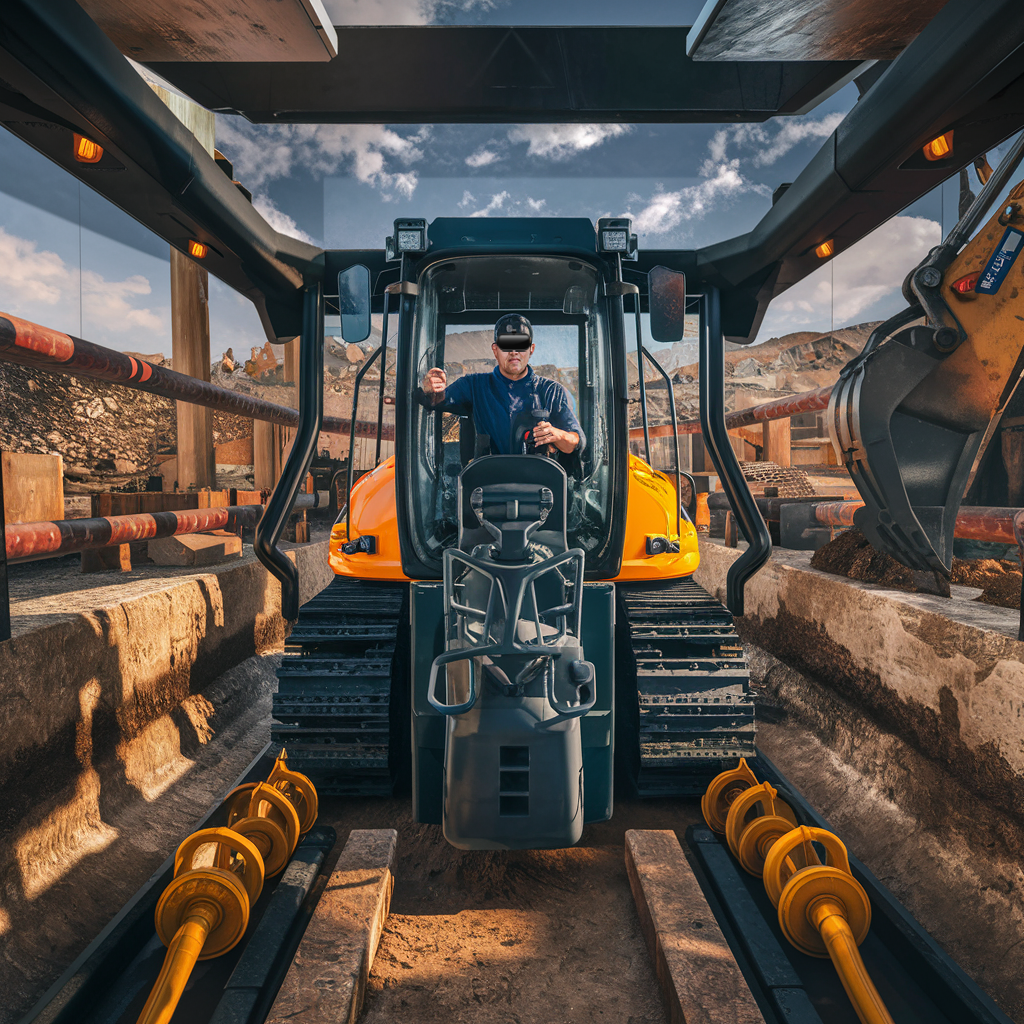Mining operations are among the most demanding and high-stakes industries, where precision and safety are paramount. Errors in operating heavy machinery not only compromise productivity but also pose significant risks to worker safety and equipment longevity. Enter VR training —a revolutionary approach to equipping workers with the skills and experience they need without the risks of real-world training.
In this blog, we’ll explore how VR training simulations are transforming heavy machinery training in mining, reducing errors, and ensuring optimal operational efficiency.

The Challenges in Mining Machinery Training
Training operators for heavy machinery in mining environments comes with numerous challenges:
- High Stakes: Mistakes during training can result in damage to expensive equipment or dangerous accidents.
- Limited Access to Equipment: Downtime for training purposes can disrupt mining operations and lead to revenue loss.
- Environmental Factors: Harsh conditions in mining sites make on-the-job training logistically and physically challenging.
These barriers make traditional training methods costly, inefficient, and sometimes impractical. This is where VR training steps in as a game-changer.
How VR Training Revolutionizes Heavy Machinery Operations
1. Risk-Free Learning Environment
Operators can practice controlling heavy machinery in realistic mining scenarios without any risk of accidents or damage to equipment. This ensures workers can learn from their mistakes in a safe, controlled environment.
2. Enhanced Skill Retention
Studies show that immersive training experiences improve information retention by engaging multiple senses. Trainees develop muscle memory and decision-making skills that translate seamlessly into real-world performance.
3. Cost Efficiency
By reducing the need for physical resources and downtime, VR training solutions lower operational costs while still delivering high-quality, practical learning experiences.
4. Real-Time Performance Analytics
Advanced VR systems provide detailed feedback and analytics on trainee performance, helping instructors identify skill gaps and tailor training programs accordingly.
5. Scalable Training Programs
VR simulations can be adapted for multiple types of heavy machinery and customized to match specific operational challenges of a mining site, making them versatile and scalable.
Applications of VR Training in Mining Operations
The versatility of VR training enables its use across a range of mining operations, including:
- Excavator Operations: Trainees learn how to maneuver large excavators with precision, minimizing errors in earthmoving and loading tasks.
- Drill Rig Training: Operators can practice drilling techniques in various geological conditions, reducing the risk of equipment failure.
- Haul Truck Navigation: VR simulations help drivers navigate tight spaces and challenging terrains with confidence.
- Emergency Response Drills: Workers can rehearse protocols for hazardous situations like equipment malfunctions or mine collapses.
Conclusion
The integration of VR training simulations into heavy machinery training in mining is transforming how operators are prepared for their roles. By offering a risk-free, cost-effective, and highly immersive learning environment, VR is minimizing human errors and ensuring safer, more efficient operations.
If you’re considering adopting VR training solutions for your mining operations, partner with experts like DevDen. As leaders in AR/VR 3D solutions, DevDen can help you design customized training programs that meet the unique demands of your industry.
Ready to revolutionize your training approach? Explore the possibilities with VR today!



